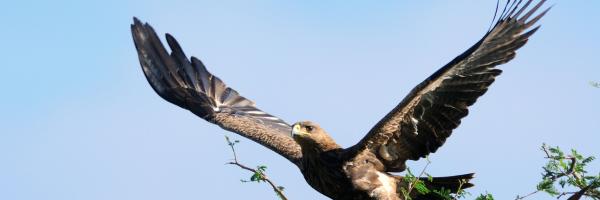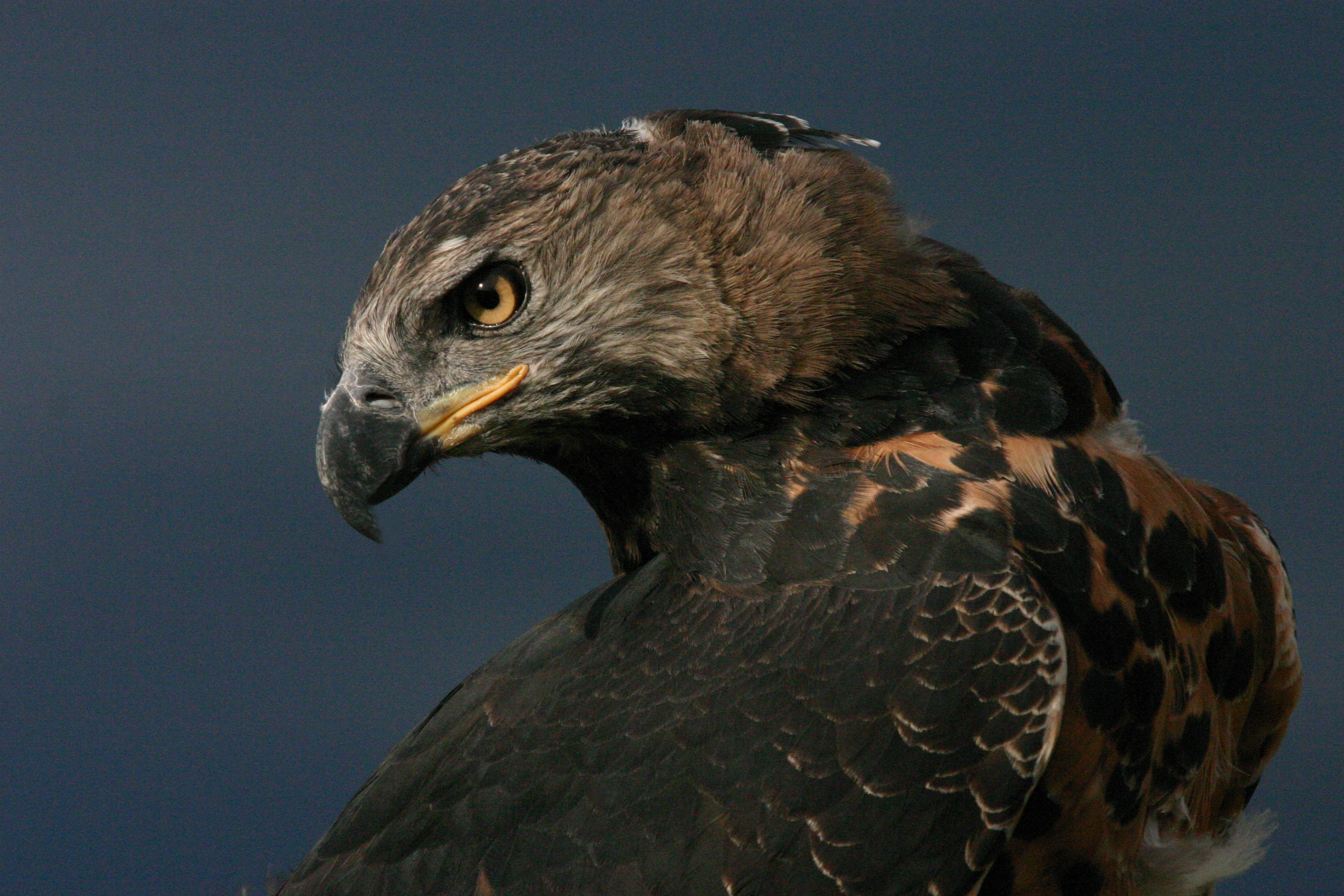Munir Virani
A team of Kenyan and international scientists have reported widespread declines of Kenya’s birds of prey over the past 40 years. In a study published in the journal Biological Conservation scientists from Kenya, the UK, France and the USA have published the first nationwide trends for Kenya’s raptors.
Kenya’s diurnal raptors were first-surveyed in the 1970s by identifying and counting individuals while driving along roads, both inside and outside of protected areas. These roadside surveys were repeated multiple times during the 2000s. Of 22 species examined, 19 were seen less frequently during the recent period and the median rate of the decline was -70%. Some of Kenya’s most iconic raptors, including Secretarybird and Long-crested Eagle have almost disappeared, with both species declining by 94%.
Dr. Peter Njoroge, Head of Ornithology Section at National Museums of Kenya, an
organization involved in the study, said: Most birds of prey are long-lived and slow
breeding, and therefore they can’t cope with the myriad of threats they face today if
urgent action to protect them is not initiated. We are on the brink of losing many of
them along with the environmental benefits they confer on humanity.
Simon Thomsett a Director of The Kenya Bird of Prey Trust and a co-author of the
study said: The population of raptors today bears no resemblance to those numbers
we saw a half century ago. And those had already drastically declined 25 years
ago...before we started to take notice. Today they are a shadow of former years and
in rapid decline. Even our most commonly seen are a fraction of what they were and
we should be alarmed, as would other nations be...and we must reverse this trend
immediately lest we lose more species.
Declines occurred among all vulture and large eagle species, and were especially pronounced among once-common small and medium-sized raptors like Augur Buzzard and Black-winged Kite. No species had increased significantly. Based on projected declines over three generation lengths, 45% of the species examined would qualify as nationally Endangered or Critically Endangered. The study’s findings further demonstrated the importance of protected areas for Kenya's remaining populations as raptors declined less severely inside parks and reserves compared to unprotected lands.
Dr. Phil Shaw of the University of St Andrews, and a co-lead author of the study, said:
Our findings highlight the stark contrast between raptor trends in protected areas
and in unprotected land. Outside of Kenya’s protected area network there is evidence
that populations of many raptors have almost collapsed, and this cuts across species
size, diet or ecological requirements. While most species have fared better within
protected areas, several large raptor species have shown worrying declines even here,
suggesting a need to bolster site protection and connectivity.
The losses were attributed to a sharp rise in human population growth that has resulted in a biologically impoverished landscape which is less resilient to climatic changes and provides fewer ecosystem services, and where attitudes toward wildlife have become increasingly intolerant. Other acute threats
to Kenya’s raptors include, electrocution and collision with energy infrastructure, deliberate and incidental poisoning, and impacts associated with habitat degradation.
Shiv Kapila a Director of The Kenya Bird of Prey Trust and a co-author of the study
commented: These surveys show precipitous and alarming declines of the majority of
raptor species that occur throughout the region – most are now confined to protected
areas, which are themselves greatly threatened in Africa by the continent’s push for
development. Hazardous energy infrastructure within and around PAs and rampant
poisoning that continues unabated, are having profound effects on our raptor
communities and populations.
Dr. Darcy Ogada of The Peregrine Fund and a co-lead author of the study, said: Many of
Kenya’s raptors are at a breaking point. After decades of habitat loss, more acute
threats such as electrocution and persecution are rapidly taking a toll on already depleted populations. Whether species such as Augur Buzzard, Bearded Vulture, Long-crested Eagle and Egyptian Vulture will continue to persist in the coming years and decades is in doubt, waiting another 5-10 years for some of these species could be too late.
Dr. Munir Virani, the CEO of the Mohamed Bin Zayed Raptor Conservation Fund and a
co-author on the paper said: It is disheartening to see such a catastrophic decline in
these apex predators. Some threats like raptor electrocutions can be easily mitigated
and some excellent work is being done around the world to reduce raptor mortalities - a
case in point is the remediation of power lines done in Mongolia where raptor
mortalities from electrocution has been reduced by 98% per year.
Despite the current situation the authors suggest that Kenya's raptor declines could be reversed through enhanced management of protected areas, mitigation of specific threats, and the implementation of species recovery plans.
The largest declines were recorded in the following species: Secretarybird and Long-crested Eagle -94%, Common Kestrel -95%, Lesser Kestrel -93%, Augur Buzzard -91%, and Hooded Vulture and Montagu’s Harrier, both -88%.








